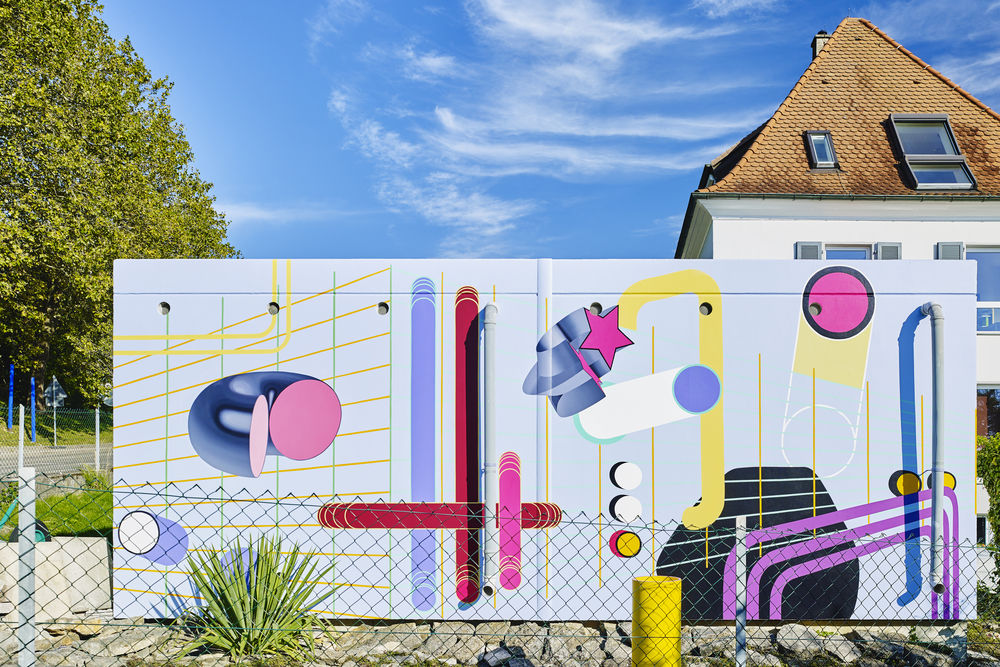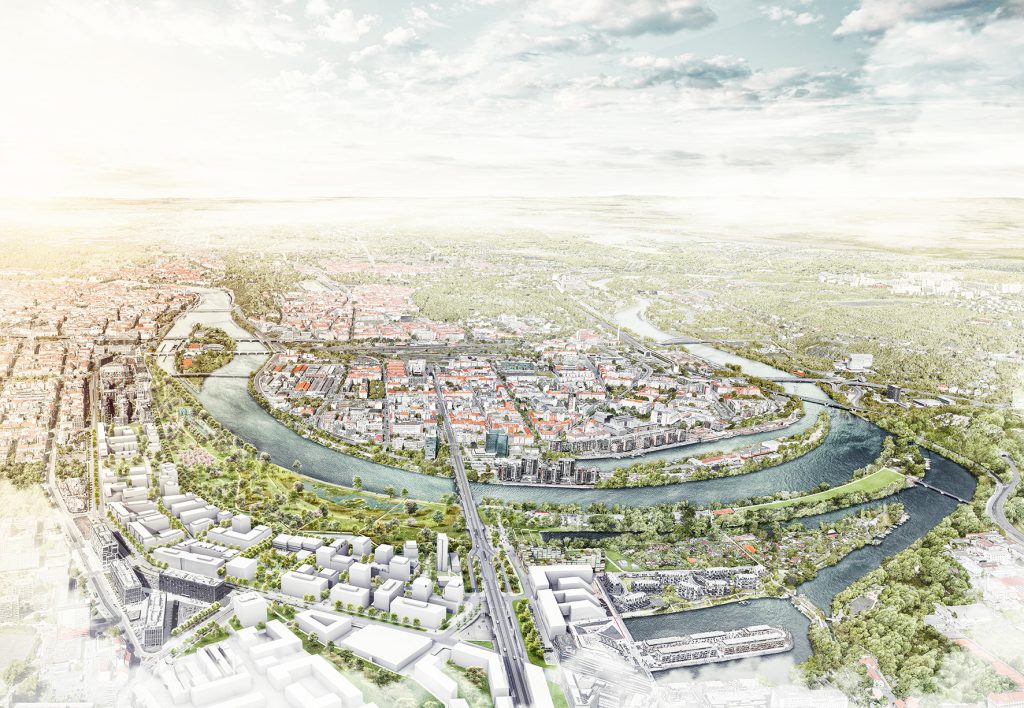
The IBA Basel project “24 Stops” inspired the artist Tobias Rehberger to create cross-border waymarkers between the Fondation Beyeler in Riehen (CH) and the Vitra Design Museum in Weil am Rhein (D). They inspire to see the border region between Germany and Switzerland in a new light.
Billboard
Skyscrapper
Halfpage
The IBA Basel project “24 Stops” inspired the artist Tobias Rehberger to create cross-border waymarkers between the Fondation Beyeler in Riehen (Switzerland) and the Vitra Design Museum in Weil am Rhein (Germany). Not only do the cultural sites in conjunction with the communities of Riehen and Weil bring two places of top-class architecture closer together through their project, they also inspire visitors to see the border region between Germany and Switzerland in a new light – as a diverse natural and cultural landscape.
All photos: Mark Niedermann © Studio Rehberger
In the south-west of Germany, the border to France and Switzerland runs within the Rhine along many kilometres. Only in one section north-east of Basel, a tip of Switzerland boldly extends across the border river, projecting towards the foothills of the Black Forest. In this area, cities like Lörrach or Weil am Rhein are neighbours of the Swiss town of Riehen. For a long time, the latter has merely been a rural residential area in the urban agglomeration area of Basel. Now that Riehen also accommodates the Fondation Beyeler, the town has started to appear on international maps. The same applies to Weil am Rhein, where the furniture manufacturer Vitra has turned its company site into a campus for contemporary architecture, resulting in designers from New York or Los Angeles knowing the place.
Vitra has been inviting famous architects to build on their grounds since the 1980s. The company doesn’t aim to cultivate a standardised company architecture in this way. Instead, world-famous architects have created an unparalleled collection of buildings over the years. Zaha Hadid, Tadao Ando and Frank O. Gehry, as well as Sejima and Nijizawa or Herzog & de Meuron are among them. Their respective design language is as varied as their building tasks. They range from a fire station and production buildings to a museum and open storage facility. All are located on campus, which marks the northern end of the city of Weil am Rhein. Restricted by railway tracks and residential buildings, it opens up to the open landscape in the east.
All photos: Mark Niedermann © Studio Rehberger
Medium Rectangle
Halfpage
24 stops along five kilometres
The museum of the Fondation Beyeler is also situated on the outskirts of the town of Riehen, but in the middle of an English landscape garden. Old trees, ponds, pavilions and the plain of the river Wiese characterise the ambience of the museum. The Beyeler couple chose this location to publicly showcase their art collection, which has been accumulated over more than 50 years. In the mid-1990s they commissioned Renzo Piano to build a museum, which opened its doors in 1997. Since then, it has been developed continuously. Peter Zumthor, for instance, is currently working on an extension that will add a new focal point to the museum. It is moreover already playing an important role by forming the starting point of an unusual five-kilometre-long project: the “24 Stops” by Tobias Rehberger.
As one of the first IBA-labelled projects, the art trail – also known as Rehberger Weg – connects the museum sites in Riehen and Weil. Certainly, art lovers have also visited both attractions in the past, but in between there was a search across borders . The special features of the landscape of the trinational agglomeration hardly received any attention. This changed in 2016: since then, 24 art objects mark the path from Riehen to Weil am Rhein. The Fondation Beyeler, the municipality of Riehen, Vitra and the city of Weil am Rhein assumed joint responsibility for the development and realisation of the idea. The German artist Tobias Rehberger designed an inspiring object for every junction of the path: 24 stops.
The german version of this article on the subject of IBA Basel 2020 was published in G+L 01/2020.























